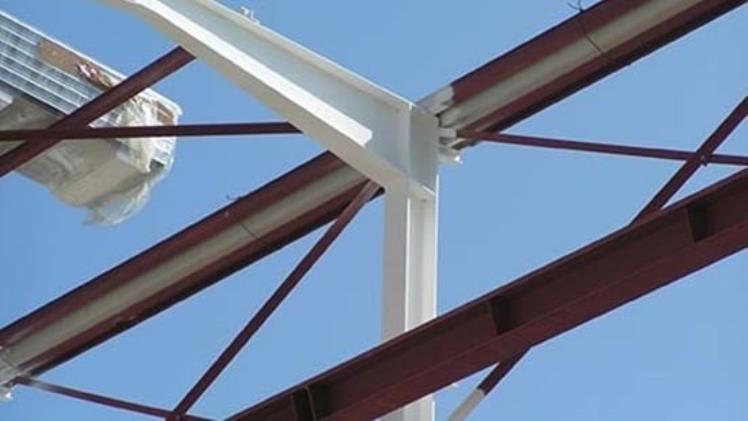Introduction
Building and infrastructure fires can cause massive damage to property and loss of life. Intumescent coatings provide an effective solution to prevent the spread of fire through compartmentalization. These coatings swell upon exposure to heat, generating an insulating char layer that prevents flames and hot gases from penetrating. They are widely used in various industries to enhance fire safety.
What are Intumescent Coatings?
Intumescent coatings, also known as passive fire protection coatings, contain swelling agents that expand when heated. The primary components are an acid source, a carbonific, and a filler. In a fire situation, the heat causes the acid and carbonific to react and produce non-flammable gases like carbon dioxide that become trapped in the filler material. This leads to the formation of an expanded, low-density char layer that acts as an insulation barrier against heat transfer. Different types of intumescent coatings are developed based on the application and required fire resistance time.
Classification of Intumescent Coatings
CoherentMI details in Intumescent Coatings Market, some broad classifications based on their activation temperature and application method are:
- Low-temperature coatings: Activate between 120°C to 250°C and are used on combustible substrates for up to 120 minutes of fire protection. Commonly used in domestic and commercial applications.
- High-temperature coatings: Have activation temperatures above 250°C and provide over 120 minutes of protection. Suitable for industrial environments dealing with high-heat equipment, vessels, and structures.
- Solvent-based coatings: Conventional intumescent paints and primers that use organic solvents as carriers. Easy to apply but have VOC emission concerns.
- Water-based coatings: Environment-friendly options that use water as the primary solvent. Have low VOC and odor but require modified application techniques.
- Thick-film coatings: High-build coatings sprayed or trowelled at 1000+ microns in a single coat. Ideal for complex steel structures requiring long-lasting fireproofing.
- Thin-film intumescent coatings: Applied in multiple thinner coats, usually 150-250 microns. Versatile solution for general passive fire protection needs.
Key Applications of Intumescent Coatings
- Structural Steel Protection: Bridges, buildings, industrial plants extensively use intumescent coatings to fireproof steel columns, beams, joists, decks for up to 4 hours of insulation.
- Oil & Gas Industry: Refineries, pipelines, offshore rigs depend on intumescent coatings to protect pressure vessels, storage tanks, pipework from flash fires and pool fires.
- Marine Industry: Ships increasingly opt for intumescent protective coatings on decks, bulkheads and structural members to achieve SOLAS regulations.
- Tunnel and Underground Structures: Metropolitan subway tunnels, underground parking lots, basements specify intumescent coatings for their fire compartmentalization requirements.
- Aerospace Sector: Aircraft carriers, fuselage, landing gear, engines rely on intumescent coatings to meet stringent aeronautical fire safety standards.
- Manufacturing and Industrial Facilities: Factories utilize intumescent paints and mastics to fireproof electrical cabinets, HVAC ducts, conveyor systems for safe operations.
- Building Envelope Protection: Curtain walls, architectural panels, metal facades, roofing, and cladding systems benefit from integrated intumescent materials.
Advantages of Using Intumescent Coatings
– Passive fire protection without need for additional materials or assembly
– Long-lasting protection for up to 4 hours as validated by fire tests
– Chemically bonded to substrates, unaffected by weather or physical damage
– Cost-effective solution compared to traditional board systems
– Easy application through brush, roller or spray techniques
– Environment-friendly, low VOC compliant paints available
– Variety of finishes to suit aesthetics from primer to colored topcoats
– Improves energy efficiency by preventing heat transfer during fires
– Facilitates compartmentalization and maintains fire barriers longer
– Meets stringent industry standards and building codes worldwide
Market Outlook
For more details on the market outlook for intumescent coatings, please refer to the in-depth market research report published on CoherentMI. While the global market continues to grow steadily due to increased regulations and construction of green buildings, Europe and North America currently dominate worldwide demand. Key factors influencing future market trends include stricter building codes, offshore oil & gas activity levels as well as overall economic conditions. Intumescent coatings will remain critical for passive fire protection of various structures into the future.
In conclusion, intumescent coatings provide a thin yet highly effective means of fire protection through their unique intumescent mechanism. The self-expanding char layer forms a durable thermal barrier, helping to contain fires and prevent structural failure. With their versatility and advantages over other methods, intumescent coatings will continue to be widely specified in building construction as well as various industrial applications globally. Proper specification and application is important to ensure they perform as designed to protect lives and property in the event of a fire.

